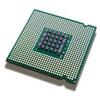Functional verification is a critical bottleneck in integrated circuit development, with CPU verification being especially time-intensive and labour-consuming. Industrial practice relies on differential testing for CPU verification, yet faces bottlenecks at nearly each stage of the framework pipeline: front-end stimulus generation lacks micro-architectural awareness, yielding low-quality and redundant tests that impede coverage closure and miss corner cases. Meanwhile, back-end simulation infrastructure, even with FPGA acceleration, often stalls on long-running tests and offers limited visibility, delaying feedback and prolonging the debugging cycle. Here, we present ISAAC, a full-stack, Large Language Model (LLM)-aided CPU verification framework with FPGA parallelism, from bug categorisation and stimulus generation to simulation infrastructure. To do so, we presented a multi-agent stimulus engine in ISAAC's front-end, infused with micro-architectural knowledge and historical bug patterns, generating highly targeted tests that rapidly achieve coverage goals and capture elusive corner cases. In ISAAC's back-end, we introduce a lightweight forward-snapshot mechanism and a decoupled co-simulation architecture between the Instruction Set Simulator (ISS) and the Design Under Test (DUT), enabling a single ISS to drive multiple DUTs in parallel. By eliminating long-tail test bottlenecks and exploiting FPGA parallelism, the simulation throughput is significantly improved. As a demonstration, we used ISAAC to verify a mature CPU that has undergone multiple successful tape-outs. Results show up to 17,536x speed-up over software RTL simulation, while detecting several previously unknown bugs, two of which are reported in this paper.
翻译:暂无翻译




